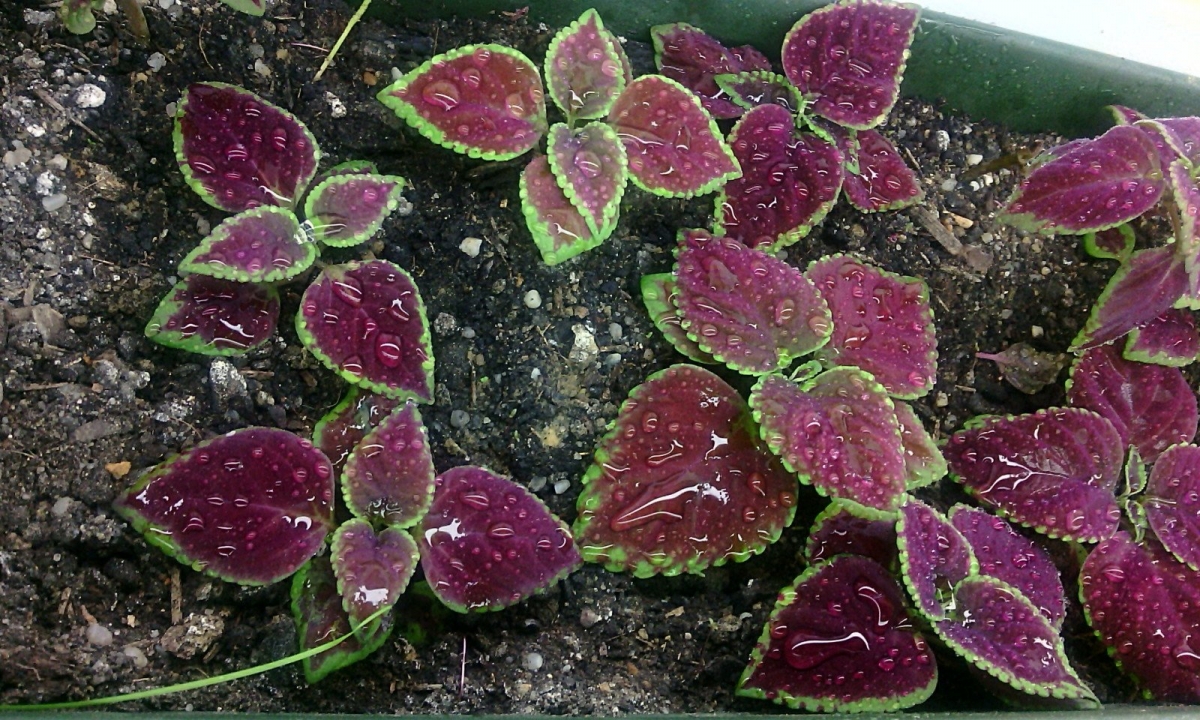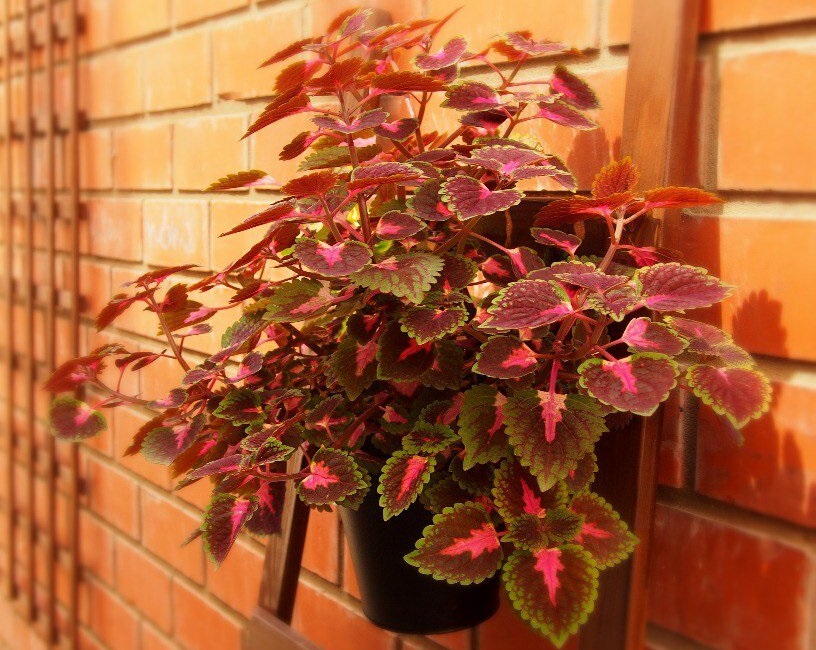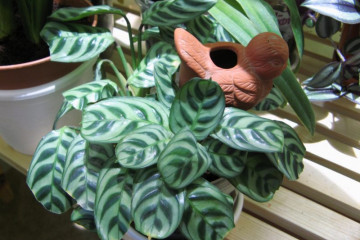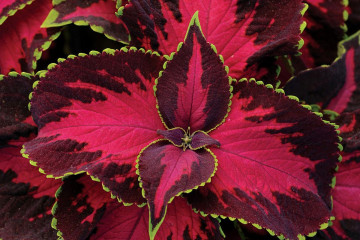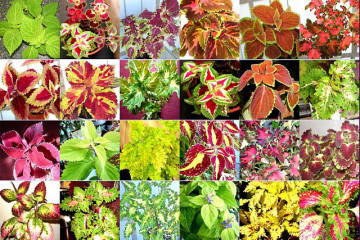Nettle or houseplant Coleus
Content:
Nettle is a houseplant whose botanical name sounds like "coleus". The plant is quite unpretentious in care and pleases with its variegated leaves with unusual colors.
Nettle, or coleus, houseplant
Coleus for its similarity with nettles and croton received the popular names "nettle", "home nettle" and "poor man's croton". But unlike Croton, the price of Coleus is much lower, which makes it a more profitable option.
Coleus is a home flower, belongs to the Lamiaceae family. A dwarf plant usually grows no more than 50 centimeters in height, which is at home on the windowsill, which is in its natural environment. Like all representatives of this family, nettle immediately attracts attention to its beautiful appearance.
Depending on the variety, the flower has a different color and foliage shape. The big plus of the decorative Coleus is that it can be grown as an ampelous plant in hanging pots.
There are known varieties of nettle, which differ in purple, red, pale cream, burgundy, green and pinkish colors of the leaves.
Most often, the leaves have a beautiful pattern of several flowers, which gives the bush an exotic look. Indoor flower nettle is able to bloom with small snow-white flowers, but the plant is valued for its exotic foliage, unusual shade.
Briefly about the history of appearance
The homemade nettle flower is native to the tropical forests of Africa or Asia. In its homeland, Coleus was mainly used for food, and not for decorative purposes.
Household nettles, of course, should not be eaten, as indoor varieties are hybrids designed specifically as decorative species.
An exotic tropical plant was first brought to Europe in the 19th century from an island called Java. After that, Coleus began to spread across the mainland as an indoor flower.
Can I keep in the house
There is a superstition among the people that an indoor nettle flower is unhappy, brings misfortune. It is believed that keeping such a plant in the house means arbitrarily bringing discord into the marriage. By the way, guided by signs, Coleus was nicknamed "muzhegon".
In addition to marriage, the plant can be harmful in all areas of human life. A flower with a red leaf color is especially feared - it is believed that it can bring material difficulties to the family.
Esotericists, on the contrary, believe that the presence of a flower in a house has a beneficial effect on its inhabitants. Despite superstitions and various myths, according to feng shui, Coleus, on the contrary, must be kept at home. The flower attracts good luck and has a positive effect on relationships in the family and beyond. It is recommended to place a flower pot in the northeastern side of the apartment, where the zone of knowledge and wisdom is concentrated.
Place in the interior
A house plant similar to nettle - coleus, is grown mainly at home, less often in the garden.Due to its beautiful appearance, the plant is able to decorate any interior.
The main thing is to provide containers with coleus a good and spacious place for growth. Compositions of several different varieties of nettles look especially beautiful and harmonious. A small young flower will fit well into the decor in the kitchen or in the hallway. Older plants are best placed in bedrooms or living rooms.
Coleus will fit well into a group of ornamental plants on a balcony or windowsill. A good neighborhood will be: violet, geranium, calathea or chlorophytum.
Rules for caring for Coleus at home
Indoor plant nettle does not require special care, the main thing is to follow all the rules of cultivation and avoid mistakes.
The first thing to look out for is temperature and lighting. The main condition for healthy cultivation of Coleus is to prevent direct sunlight from reaching its leaves.
- On hot and dry summer days, it is recommended to remove the flower pot in semi-dark places.
- In winter, the nettle, on the contrary, may lack lighting, so it is necessary to create it artificially using lamps.
Coleus easily tolerates heat if watered regularly. The flower comes from the hot tropics, therefore, with high humidity, it can feel good for a long time at temperatures above 25 degrees. In other seasons, it is important that the temperature does not drop below 15 degrees.
The plant is sensitive to low temperatures, since it does not differ in frost resistance. Cessation of growth, darkened leaves and shoots will let you know about hypothermia of Coleus.
Home nettle is a very moisture-loving plant that requires regular and proper watering. During dry summer periods, nettles are watered frequently and abundantly. It is recommended to loosen the soil after each watering in order to avoid stagnation of moisture, which leads to rotting of the root system and the appearance of fungus or mold.
Loosen the soil carefully, otherwise you can damage the roots. Winter watering should also be plentiful, in this Coleus differs from other decorative deciduous plants, the watering of which is noticeably reduced in winter.
Spraying the ground part of the plant with water from a spray bottle will be of additional benefit. This procedure helps to increase the humidity of the air, which is so necessary for the Coleus for healthy growth. In addition, spraying cleans the leaves of the flower from accumulated dust and dirt.
If the air humidity is low, it is necessary to increase it artificially by simple and uncomplicated methods:
- place a container of water next to the plant pot;
- spread a wet rag on the heating pipe.
Such methods help out well in winter, when the air in the room becomes dry due to heating.
The substrate in which the flower was planted, transplanted or propagated is of great importance. It should include all mineral and organic substances necessary for decorative deciduous plants, possess the necessary friability and acidity.
Classic substrate for nettles: compost soil, humus and turf soil in equal proportions.
In the first years of growth, it is necessary to transplant a flower into a new, more suitable size pot every spring. The root system of the flower grows, it becomes cramped in a small container.
Taking care of a flower correctly means feeding the Coleus on time.
- The first feeding is carried out in the spring before flowering. The plant is fed with a special complex mineral preparation for decorative deciduous crops, which contains: phosphorus, potassium, magnesium, manganese and iron.
- The second feeding is carried out in the summer immediately after flowering.
- In autumn, fertilizing is carried out with mineral and organic preparations.
During this period, nitrogen is a contraindication, since it delays the appearance and opening of buds.
Common varieties for growing at home
The most common varieties of Coleus around the world are Blume and Vershaffelt. In the 19th century, English breeders were passionate about creating hybrids of exotic plants. It was then that these two varieties of Coleus were bred, which, after their presentation to the public, were bought for very big money.
Coleus Blumei
The most popular variety of Coleus has ribbed stems and egg-shaped leaf plates. The leaves are pointed at the ends and have denticles at the edges. The leaves have different colors, they can be pink, red, dark lilac and dark red with a green wavy wide border around the edges.
Coleus Vershaffelt (Сoleusvershaffeltii)
The description of the Vershaffelt coleus is similar to that of Blume. However, the Verschaffelt has a larger leaf blade. The color of the variety is much brighter than Blume, and the surface of the leaves is velvety to the touch, since it has many thin villi.
Coleus or nettle is an exotic tropical plant that has gained unprecedented popularity among gardeners and florists around the world. Compliance with the rules of care helps to grow a beautiful flower with lush variegated foliage, even for beginners.

